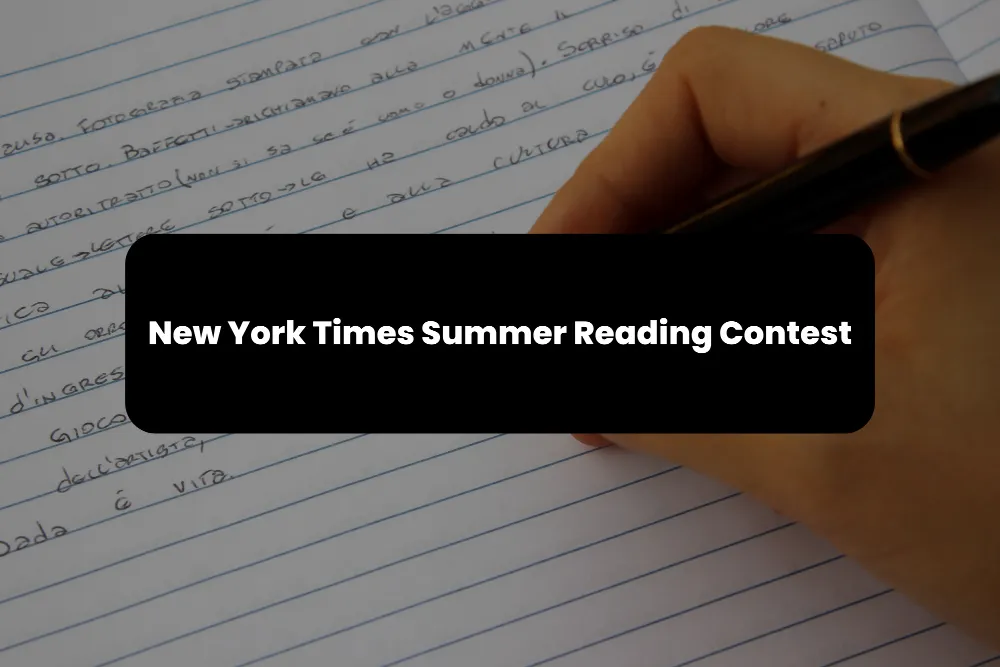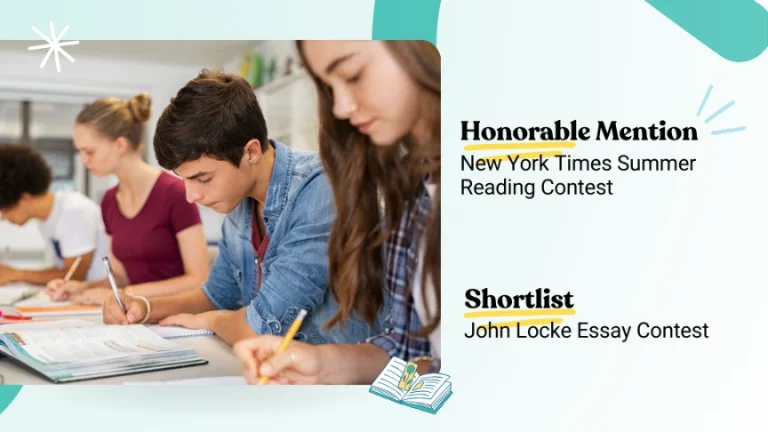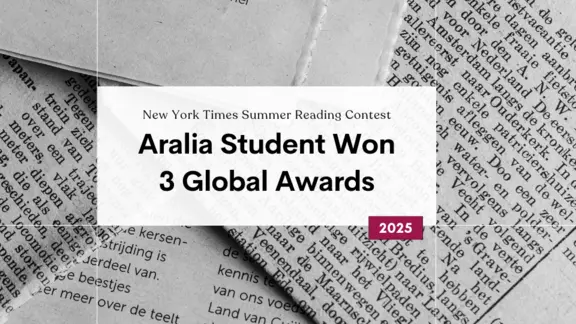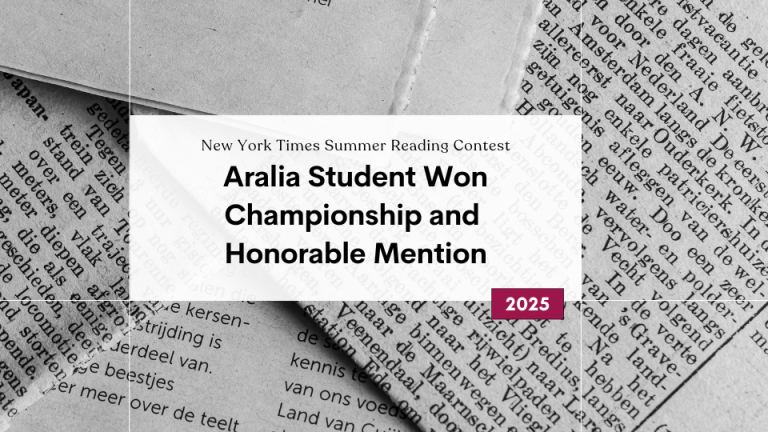LASTEST UPDATE ▪️ COMPETITION INFORMATION
2026 Competition Deadline Announced!
New York Times Summer Reading Contest
The New York Times Summer Reading Contest invites students to choose something in The Times that has sparked their interest. At the end of every week, judges from the Times newsroom pick their favorite responses, and the winner’s work will be published in The NY Times.
Interested in the competition?

Competition Overview
Students aged 13 to 19 around the world
Eligibility
Free
Entry Fee
June 5 - August 14, 2026
Contest Date
Every Tuesday during the contest
Winners Announcement
📌 Note: Aralia is not the organizer of this competition. For official rules, deadlines, and updates, please refer directly to the competition organizer. Aralia provides listings and information about competitions for student reference. Aralia is an online education platform offering competition preparation classes to students worldwide.
Competition Details
1. Competition Schedule
Before the end of the competition (August), participants can choose any article, essay, video, interaction, podcast, or photo published in the New York Times to analyze, write about, and submit to the competition. Every week, the NY Times will post a fresh version of this question: “What got your attention in The Times this week, and why?” for students to respond accordingly until the following Friday.
| Week | Start Date | Submission Deadline (9 am ET) |
|---|---|---|
| 1 | June 5 | June 12 |
| 2 | June 12 | June 19 |
| 3 | June 19 | June 26 |
| 4 | June 26 | July 3 |
| 5 | July 3 | July 10 |
| 6 | July 10 | July 17 |
| 7 | July 17 | July 24 |
| 8 | July 24 | July 31 |
| 9 | July 31 | August 7 |
| 10 | August 7 | August 14 |
2. Eligibility
Students aged 13 to 19 years old anywhere around the world are invited to submit. Students who are directly related to New York Times employees or live in the same household as those employees are not eligible to enter this contest.
3. Results
The results will be announced every Tuesday during the contest.
4. Prizes
Having your work published on The Learning Network.
How Will Your Work Be Judged?
Response explains how the Times piece connects to the writer’s own life, interests, questions, or concerns, and explores the relationship between the reader and the topic or text.
Response traces aspects of the writer’s thinking while engaging with the text. This may include details of what the writer noticed and wondered, connections made, emotional reactions, critiques of the piece, and more.
Via the use of quotes or references to specific details from the text, response shows evidence that the writer read closely, and reacted to new or notable information or ideas.
Response is written in a natural
and engaging voice and uses language, style, and tone appropriate to its purpose. Features correct grammar, spelling, and punctuation
Submission follows all contest guidelines.
Submission Guideline
Students must work alone, not in pairs or groups for this contest.
1. Written Response Guideline
- Responses must be 1,500 characters or about 250 words.
- Ensure to include the URL or headline of the Times piece you have chosen.
- If students are 13 to 19 years old in the United States and Britain, or 16 to 19 years old elsewhere in the world, they can submit by commenting on the post itself.
If students are 13 to 15 years old anywhere in the world, except in the United States and Britain, then a teacher, parent, or guardian should submit an entry on the student’s behalf using the form embedded at the bottom of each week’s post.
2. Video Response Guideline
- The video should be 90 seconds or fewer
- In the video, please say or show the headline of the Times piece you are discussing. Your video may not use any images, video clips, music, or sound effects other than those that appear in the Times piece you are discussing or those that you create yourself.
- Don’t include anyone else in the video
- Students can submit through the form (the link will be provided when the contest opens). Students will need to provide a parent or guardian’s contact information and permission.
3. Submission Preference
- Students should not focus on a particular subject. Whatever the response, students must make personal connections to the news and discuss the broader questions and ideas that the topic raises.
- Students can participate as often as every week, but please limit to one submission per person per week.









